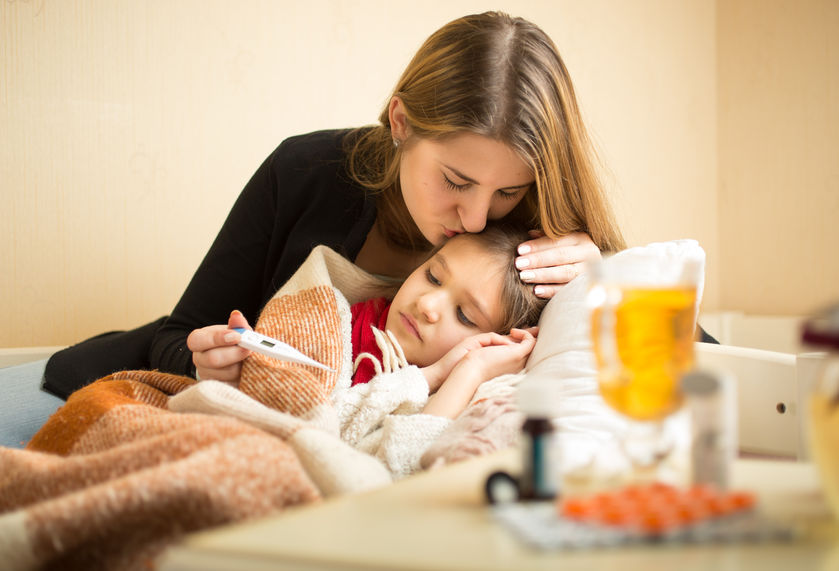Fever in children is a common occurrence that often causes concern for parents. In Singapore’s tropical climate, where infections are prevalent, knowing how to effectively treat a child with fever is essential. This article provides a comprehensive guide for parents in Singapore on understanding, managing, and treating fever in children, ensuring their comfort and speedy recovery.
Understanding Fever in Children
Fever is the body’s natural response to infection and illness. It is characterized by an elevated body temperature, typically above 37.5°C when measured orally or above 38°C when measured rectally. While fever itself is not a disease, it serves as a symptom indicating that the body is fighting off an infection or illness.
Common Causes of Fever in Children in Singapore
Singapore’s warm, humid climate and dense population make children more susceptible to various infections that can cause fever. Common causes include:
- Viral Infections: Respiratory viruses like the common cold, influenza, and hand, foot, and mouth disease (HFMD) are frequent in Singapore.
- Bacterial Infections: Conditions such as streptococcal throat infections, urinary tract infections, and bacterial pneumonia.
- Dengue Fever: A mosquito-borne viral infection that can cause high fever, common in Singapore due to the tropical climate.
- Other Illnesses: Ear infections, roseola, and even teething can sometimes result in fever in young children.
Recognizing Fever in Children
To effectively treat a child with fever, it’s important to recognize the signs and symptoms. Use a reliable digital thermometer to measure your child’s temperature. Symptoms that accompany fever can include:
- Warm or hot forehead
- Sweating
- Shivering or chills
- General body aches
- Irritability or fussiness
- Signs of dehydration such as dry mouth and reduced urine output
Home Treatment for a Child with Fever
1. Hydration
Keeping your child well-hydrated is crucial. Offer plenty of fluids such as water, diluted fruit juices, and oral rehydration solutions. Proper hydration helps regulate body temperature and prevents dehydration.
2. Creating a Comfortable Environment
Ensure that your child’s environment is cool and comfortable. Dress them in lightweight clothing and use fans or air conditioning to maintain a comfortable room temperature. Avoid heavy blankets or clothing that can trap heat.
3. Ensuring Rest
Encourage your child to rest and get plenty of sleep. Rest helps the body to heal and recover from the infection causing the fever.
4. Administering Fever-Reducing Medications
Administer appropriate fever-reducing medications such as paracetamol (acetaminophen) or ibuprofen, ensuring you follow the dosage instructions based on your child’s age and weight. It is important to avoid giving aspirin to children, as it can lead to serious side effects.

5. Sponge Baths
If your child’s fever is high and does not respond well to medications, you can give them a lukewarm sponge bath. This can help reduce body temperature gradually and provide comfort.
6. Nutritious Diet
Provide your child with easily digestible, nutritious foods to support their immune system. Light meals and snacks rich in vitamins and minerals can aid in recovery.
When to Seek Medical Attention
While most fevers in children can be managed at home, there are situations when you should seek medical attention. Consult a healthcare professional if your child:
- Has a fever above 40°C or a persistent fever lasting more than three days.
- Shows severe symptoms such as difficulty breathing, excessive lethargy, irritability, or seizures.
- Exhibits signs of dehydration, including dry mouth, sunken eyes, and reduced urine output.
- Experiences persistent vomiting, severe headache, stiff neck, or an unexplained rash.
Preventive Measures
Preventing fever involves minimizing exposure to infections. Ensure your child is up to date with vaccinations, practice good hand hygiene, and encourage regular hand washing. During dengue outbreaks, use mosquito repellents and eliminate stagnant water sources around your home to prevent mosquito breeding.
Conclusion
Treating a child with fever in Singapore involves a combination of proper home care, understanding when to seek medical advice, and preventive measures. By following the guidelines outlined in this article, parents can effectively manage their child’s fever and ensure their swift recovery and overall well-being.
In summary, managing fever in children requires vigilance, proper care, and timely medical consultation when necessary. By staying informed and prepared, parents in Singapore can provide the best possible care for their children during episodes of fever.

